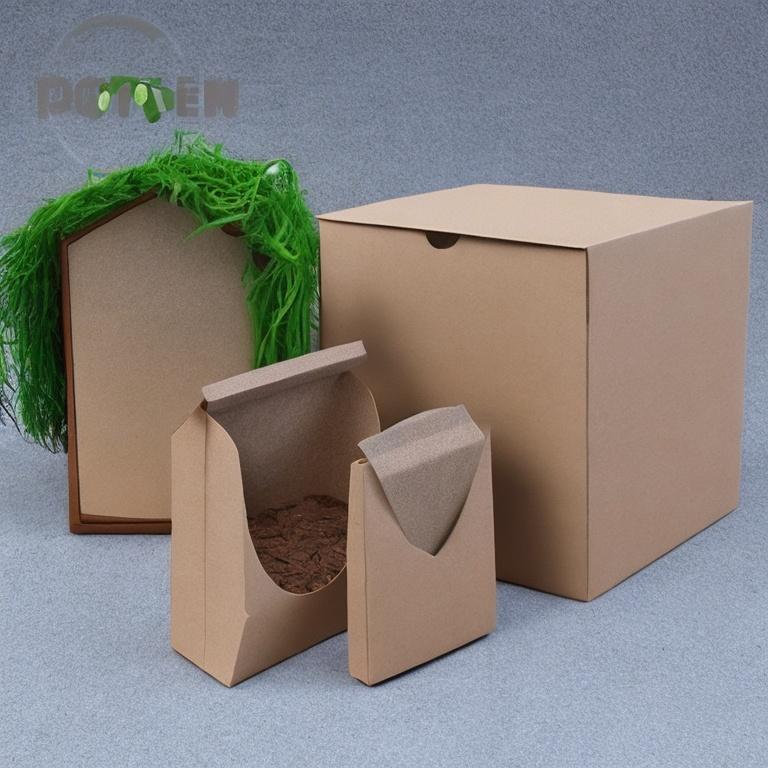In today’s world, where environmental sustainability is a growing concern, eco-friendly practices have become increasingly crucial across various industries. One significant area where companies are making a positive impact is through the use of eco-friendly boxes for packaging. These sustainable packaging solutions not only help reduce the environmental footprint but also align with consumer preferences for greener choices. In this article, we will explore the concept of custom eco-friendly boxes, their importance, and how they are transforming the packaging industry.
1. Introduction to custom eco-friendly boxes
Packaging plays a vital role in protecting products during transportation, but the traditional materials used, such as plastics and non-recyclable materials, have significant environmental consequences. This has led to a shift towards eco-friendly packaging options, including eco-friendly boxes.
2. Definition of Custom Eco-Friendly Boxes
Eco-friendly boxes are packaging solutions that are designed to minimize their impact on the environment. They are typically made from sustainable materials, such as recycled paper, cardboard, or biodegradable plastics. These boxes are produced using eco-friendly manufacturing processes and are designed to be recyclable, reusable, or compostable.
3. Environmental Impact of Packaging
Traditional packaging, especially single-use plastics, has contributed to the global plastic pollution crisis and the depletion of natural resources. These materials take centuries to decompose and often end up in landfills or oceans, causing harm to ecosystems and wildlife. Additionally, the manufacturing and disposal processes of traditional packaging generate significant greenhouse gas emissions, further exacerbating climate change.
4. Benefits of Eco-Friendly Boxes
4.1. Reduced Carbon Footprint
One of the key advantages of eco-friendly boxes is their ability to significantly reduce carbon emissions. By using sustainable materials and adopting eco-conscious manufacturing practices, these boxes minimize the environmental impact throughout their lifecycle. This reduction in carbon footprint contributes to mitigating climate change.
4.2. Sustainable Materials
Eco-friendly boxes are predominantly made from sustainable materials that can be sourced responsibly. Recycled paper and cardboard help conserve forests and reduce the need for fresh raw materials. Biodegradable plastics derived from plant-based sources offer an alternative to petroleum-based plastics, which take a toll on the environment.
4.3. Recycling and Biodegradability
Eco-friendly boxes are designed to be easily recyclable, encouraging consumers to participate in the recycling process. When properly disposed of, these boxes can be transformed into new products, reducing the demand for virgin materials. Additionally, certain eco-friendly boxes are biodegradable, meaning they break down naturally without leaving behind harmful residues.
4.4. Consumer Preference
Consumers are increasingly conscious of the environmental impact of their choices. Eco-friendly packaging, including boxes, has gained popularity due to its positive perception and alignment with sustainable values. By opting for eco-friendly boxes, businesses can enhance their brand image and cater to the growing demand for eco-conscious products.
5. Industries Adopting Eco-Friendly Packaging
Various industries have recognized the importance of adopting eco-friendly packaging practices to meet consumer expectations and reduce their ecological footprint.
5.1. Food and Beverage
The food and beverage industry has embraced eco-friendly boxes as a means to reduce plastic waste and promote sustainable practices. Biodegradable and compostable food containers and boxes made from renewable resources have gained traction, contributing to a more sustainable food packaging ecosystem.
5.2. Beauty and Cosmetics
Beauty and cosmetic brands are transitioning towards eco-friendly boxes to address concerns about excessive packaging waste. Sustainable materials like recycled paperboard and biodegradable plastics are being used to package skincare, makeup, and personal care products. This shift demonstrates the industry’s commitment to sustainability.
5.3. E-commerce and Shipping
E-commerce platforms and shipping companies are implementing eco-friendly packaging solutions, including eco-friendly boxes, to reduce the environmental impact of their operations. This includes using recyclable or compostable materials and optimizing packaging sizes to minimize waste and transportation emissions.
6. Challenges and Solutions in Implementing Eco-Friendly Packaging
While eco-friendly boxes offer significant benefits, their widespread adoption faces several challenges that need to be addressed.
6.1. Cost Considerations
One of the primary concerns for businesses is the potential increase in packaging costs when switching to eco-friendly alternatives. However, as sustainability becomes a more integral part of business strategies, economies of scale, innovative materials, and streamlined production processes are gradually making eco-friendly options more cost-competitive.
6.2. Availability of Sustainable Materials
Access to sustainable materials can be a challenge, especially for businesses operating in regions with limited resources. However, as demand for eco-friendly packaging grows, suppliers are expanding their offerings, making sustainable materials more accessible and affordable.
6.3. Education and Consumer Awareness
Educating consumers about the benefits and proper disposal methods of eco-friendly packaging is essential for its successful implementation. Promoting awareness through marketing campaigns, labeling, and partnerships with environmental organizations can help drive consumer adoption and responsible use.
7. Best Practices for Using Eco-Friendly Boxes
To maximize the effectiveness of eco-friendly boxes, businesses should consider the following best practices:
7.1. Optimal Packaging Design
Designing eco-friendly boxes with the right size and structure minimizes material waste and maximizes space utilization during transportation. Customized inserts and dividers can provide additional protection while reducing the need for excess packaging.
7.2. Collaboration and Industry Standards
Collaboration among stakeholders within an industry can drive the adoption of eco-friendly practices. Developing industry standards and certifications for eco-friendly packaging helps create a consistent framework and ensures transparency throughout the supply chain.
7.3. Proper Disposal and Recycling
Encouraging consumers to properly dispose of and recycle eco-friendly boxes is crucial for their environmental impact. Clear labeling, instructions, and partnerships with recycling facilities facilitate the recycling process and ensure that boxes are recycled efficiently.
8. Conclusion
Custom boxes have emerged as a sustainable alternative to traditional packaging, offering numerous benefits such as reduced carbon footprint, use of sustainable materials, and recyclability. As consumers prioritize eco-conscious choices, businesses across various industries are adopting these boxes to meet customer expectations and contribute to a greener future. While challenges exist, advancements in materials, cost-effectiveness, and consumer education are paving the way for wider adoption of eco-friendly packaging practices.
9. FAQs
9.1. Are eco-friendly boxes more expensive than traditional packaging?
Initially, eco-friendly boxes may have a slightly higher upfront cost. However, with advancements in sustainable materials and increased demand, prices are becoming more competitive. Additionally, the long-term benefits and positive brand image associated with eco-friendly packaging often outweigh the initial investment.
9.2. Can eco-friendly boxes be used for shipping heavy items?
Yes, eco-friendly boxes can be designed to accommodate various product weights and sizes. Customized box structures, reinforcements, and cushioning materials can be used to ensure the safety and integrity of heavy items during shipping.
9.3. How can I identify if a box is eco-friendly?
Look for labels or certifications indicating eco-friendly attributes such as “recyclable,” “made from recycled materials,” or “biodegradable.” Additionally, some companies may provide detailed information about their sustainable practices on their packaging or websites.
9.4. Are there any regulations or certifications for eco-friendly packaging?
Yes, several organizations and certifications ensure the credibility and environmental standards of eco-friendly packaging. Examples include Forest Stewardship Council (FSC) certification for responsibly sourced paper, Sustainable Forestry Initiative (SFI) certification, and various compostability certifications like ASTM D6400 and EN 13432.
9.5. What are some alternatives to eco-friendly boxes?
Some alternatives to eco-friendly boxes include reusable packaging, minimalist packaging designs that reduce material usage, and digital alternatives like e-tickets or electronic receipts. These options help reduce waste and promote sustainability in different contexts.






